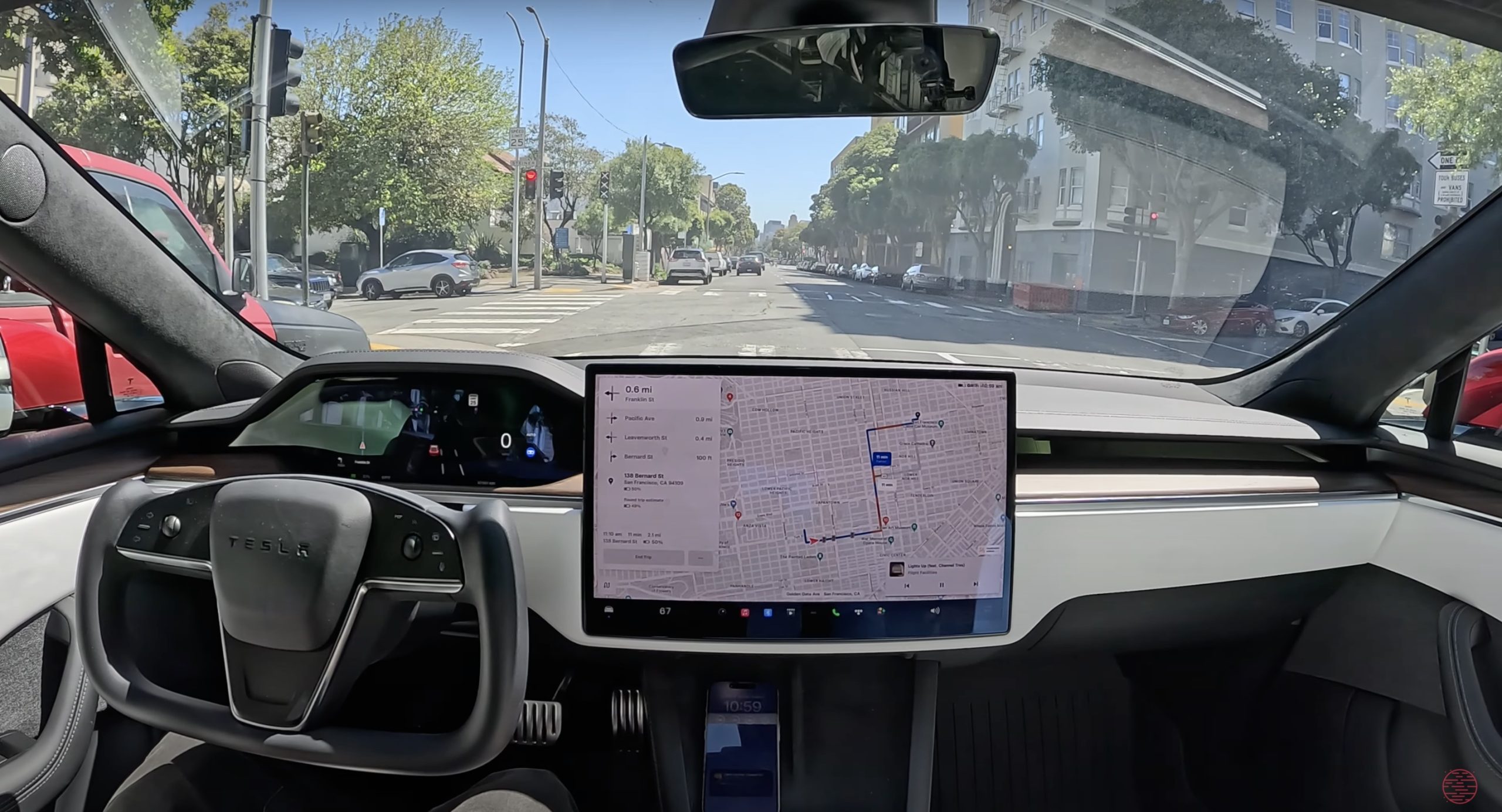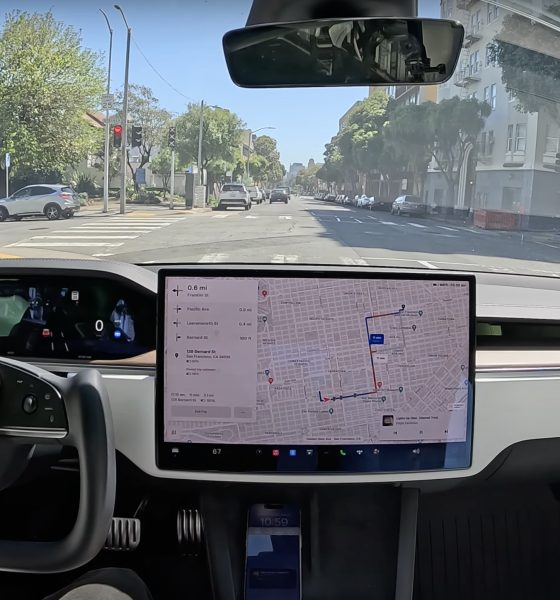A former Tesla executive has warned about a delay to regulations in Europe that could affect the launch of Full Self-Driving (FSD) in the region.
Earlier this month, former Tesla Global Vehicle Automation and Safety Policy Lead Marc Van Impe announced his departure on LinkedIn, along with sharing a few choice words about the delay of certain regulations surrounding advanced driver assistance systems (ADAS) in Europe. Van Impe simultaneously served as a Secretary of the United Nations (UN) task force, creating the new UN Regulation 171, known as DCAS.
The former executive, who will now serve as the Global Policy Advisor at SpaceX, says that a decision was made to delay certain elements of the DCAS regulation, “possibly until 2028,” potentially affecting FSD’s launch in Europe and the UK. He says that the move also “impacts Europe’s competitiveness,” coming at a time when Tesla has seemingly been eager to launch the software beyond North America.
Xpeng executive names unlikely challenge for Tesla FSD in China
During Tesla’s Q2 earnings call earlier this year, Elon Musk said he expected to gain approval for FSD Supervised in Europe and China and elsewhere by the end of 2024, so the setback could come as a major blow. Despite this, Van Impe also notes that it may be possible for Tesla to gain a “temporary certification or deployment through pre-certification” as potential options to avoid delaying the FSD launch.
You can read Van Impe’s statements on the matter below, as part of his longer departure post.
Over the past 4 years, I’ve strived to accelerate the deployment of new ADAS technologies in global markets as the Secretary of the UN Taskforce ADAS developing the new UN Regulation 171 (or ‘DCAS’). This regulation was a step-change in the ADAS homologation approach – from technically explicit requirements to performance-based assessment – opening the door for a wider array of systems. Just recently, UN GRVA adopted an amendment which will make more capabilities such as system-initiated maneuvers possible.
Sadly, the decision was made to delay some of these capabilities for urban environments – possibly until 2028 (!).
This impacts Europe’s competitiveness and it’s clear that the type-approval framework needs to evolve to better and more quickly tackle innovative technologies. Perhaps temporary certification or deployment through pre-certification can prove a solution.
In the post, the former Tesla executive also highlighted two others previously in the company’s public policy ranks: former VP of Public Policy Rohan Patel, and Jos Dings, Tesla’s former EMEA public policy director, who left earlier this year and earlier this month, respectively. He called them both “dear mentors,” who he says were “extremely patient” with him, along with sharing a few other shoutouts.
Meanwhile, Tesla’s launch of FSD Supervised in China appears to be full steam ahead, with the company earlier this month announcing that it would open FSD transfers on new purchases through the end of the year.
In June, local reports also said that Tesla China would be testing 10 FSD Supervised-equipped vehicles ahead of a public rollout of the software. The company also reportedly gained tentative approval for FSD in China in late April, so the broad expectations for a launch this year aren’t unwarranted.
RELATED: NHTSA launches Tesla FSD probe covering 2.4M EVs
Need accessories for your Tesla? Check out the Teslarati Marketplace:
- https://shop.teslarati.com/collections/tesla-cybertruck-accessories
- https://shop.teslarati.com/collections/tesla-model-y-accessories
- https://shop.teslarati.com/collections/tesla-model-3-accessories
What are your thoughts? Let me know at zach@teslarati.com, find me on X at @zacharyvisconti, or send us tips at tips@teslarati.com.

News
Tesla FSD fleet is nearing 7 billion total miles, including 2.5 billion city miles
As can be seen on Tesla’s official FSD webpage, vehicles equipped with the system have now navigated over 6.99 billion miles.

Tesla’s Full Self-Driving (Supervised) fleet is closing in on almost 7 billion total miles driven, as per data posted by the company on its official FSD webpage.
These figures hint at the massive scale of data fueling Tesla’s rapid FSD improvements, which have been quite notable as of late.
FSD mileage milestones
As can be seen on Tesla’s official FSD webpage, vehicles equipped with the system have now navigated over 6.99 billion miles. Tesla owner and avid FSD tester Whole Mars Catalog also shared a screenshot indicating that from the nearly 7 billion miles traveled by the FSD fleet, more than 2.5 billion miles were driven inside cities.
City miles are particularly valuable for complex urban scenarios like unprotected turns, pedestrian interactions, and traffic lights. This is also the difference-maker for FSD, as only complex solutions, such as Waymo’s self-driving taxis, operate similarly on inner-city streets. And even then, incidents such as the San Francisco blackouts have proven challenging for sensor-rich vehicles like Waymos.
Tesla’s data edge
Tesla has a number of advantages in the autonomous vehicle sector, one of which is the size of its fleet and the number of vehicles training FSD on real-world roads. Tesla’s nearly 7 billion FSD miles then allow the company to roll out updates that make its vehicles behave like they are being driven by experienced drivers, even if they are operating on their own.
So notable are Tesla’s improvements to FSD that NVIDIA Director of Robotics Jim Fan, after experiencing FSD v14, noted that the system is the first AI that passes what he described as a “Physical Turing Test.”
“Despite knowing exactly how robot learning works, I still find it magical watching the steering wheel turn by itself. First it feels surreal, next it becomes routine. Then, like the smartphone, taking it away actively hurts. This is how humanity gets rewired and glued to god-like technologies,” Fan wrote in a post on X.
News
Tesla starts showing how FSD will change lives in Europe
Local officials tested the system on narrow country roads and were impressed by FSD’s smooth, human-like driving, with some calling the service a game-changer for everyday life in areas that are far from urban centers.

Tesla has launched Europe’s first public shuttle service using Full Self-Driving (Supervised) in the rural Eifelkreis Bitburg-Prüm region of Germany, demonstrating how the technology can restore independence and mobility for people who struggle with limited transport options.
Local officials tested the system on narrow country roads and were impressed by FSD’s smooth, human-like driving, with some calling the service a game-changer for everyday life in areas that are far from urban centers.
Officials see real impact on rural residents
Arzfeld Mayor Johannes Kuhl and District Administrator Andreas Kruppert personally tested the Tesla shuttle service. This allowed them to see just how well FSD navigated winding lanes and rural roads confidently. Kruppert said, “Autonomous driving sounds like science fiction to many, but we simply see here that it works totally well in rural regions too.” Kuhl, for his part, also noted that FSD “feels like a very experienced driver.”
The pilot complements the area’s “Citizen Bus” program, which provides on-demand rides for elderly residents who can no longer drive themselves. Tesla Europe shared a video of a demonstration of the service, highlighting how FSD gives people their freedom back, even in places where public transport is not as prevalent.
What the Ministry for Economic Affairs and Transport says
Rhineland-Palatinate’s Minister Daniela Schmitt supported the project, praising the collaboration that made this “first of its kind in Europe” possible. As per the ministry, the rural rollout for the service shows FSD’s potential beyond major cities, and it delivers tangible benefits like grocery runs, doctor visits, and social connections for isolated residents.
“Reliable and flexible mobility is especially vital in rural areas. With the launch of a shuttle service using self-driving vehicles (FSD supervised) by Tesla in the Eifelkreis Bitburg-Prüm, an innovative pilot project is now getting underway that complements local community bus services. It is the first project of its kind in Europe.
“The result is a real gain for rural mobility: greater accessibility, more flexibility and tangible benefits for everyday life. A strong signal for innovation, cooperation and future-oriented mobility beyond urban centers,” the ministry wrote in a LinkedIn post.
News
Tesla China quietly posts Robotaxi-related job listing
Tesla China is currently seeking a Low Voltage Electrical Engineer to work on circuit board design for the company’s autonomous vehicles.

Tesla has posted a new job listing in Shanghai explicitly tied to its Robotaxi program, fueling speculation that the company is preparing to launch its dedicated autonomous ride-hailing service in China.
As noted in the listing, Tesla China is currently seeking a Low Voltage Electrical Engineer to work on circuit board design for the company’s autonomous vehicles.
Robotaxi-specific role
The listing, which was shared on social media platform X by industry watcher @tslaming, suggested that Tesla China is looking to fill the role urgently. The job listing itself specifically mentions that the person hired for the role will be working on the Low Voltage Hardware team, which would design the circuit boards that would serve as the nervous system of the Robotaxi.
Key tasks for the role, as indicated in the job listing, include collaboration with PCB layout, firmware, mechanical, program management, and validation teams, among other responsibilities. The role is based in Shanghai.
China Robotaxi launch
China represents a massive potential market for robotaxis, with its dense urban centers and supportive policies in select cities. Tesla has limited permission to roll out FSD in the country, though despite this, its vehicles have been hailed as among the best in the market when it comes to autonomous features. So far, at least, it appears that China supports Tesla’s FSD and Robotaxi rollout.
This was hinted at in November, when Tesla brought the Cybercab to the 8th China International Import Expo (CIIE) in Shanghai, marking the first time that the autonomous two-seater was brought to the Asia-Pacific region. The vehicle, despite not having a release date in China, received a significant amount of interest among the event’s attendees.










